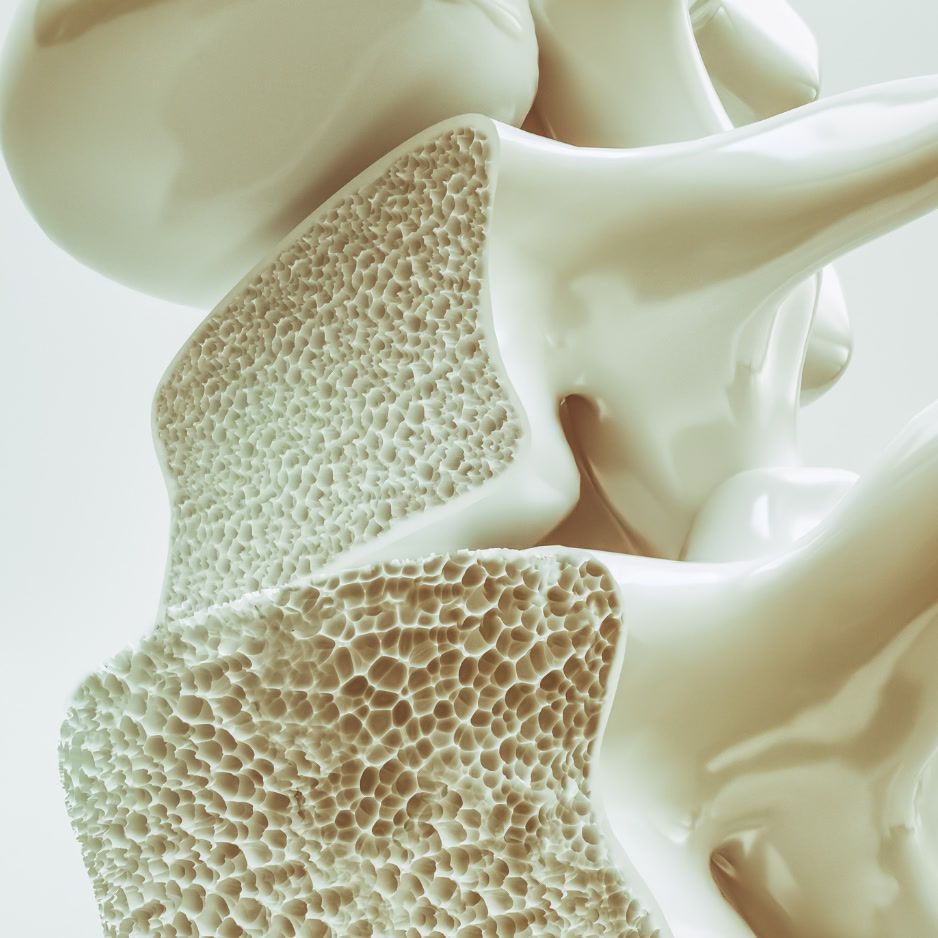Body Composition vs Weight: What Matters for Your Health

Body Composition vs Weight: What Matters for Your Health
If you’ve ever looked leaner, felt stronger, or hit a PR—yet the scale didn’t budge—you’ve already seen the difference between body composition and weight. Your scale shows total pounds. Body composition shows what those pounds are made of: fat, lean tissue (muscle, organs, water), and bone.
This guide clarifies the difference, compares measurement tools like DEXA and BIA, and provides a simple plan to track the metrics that truly matter for your health.
Quick answer: Is body composition more important than weight?
Yes. Body composition tells a richer story than weight or BMI alone. More muscle and less visceral fat generally align with better health—even when weight or BMI stay the same, as highlighted by cardiology experts at UCLA Health on body composition and heart health.
Body composition vs weight: What’s the difference?
| Metric | What it is | Main limitation |
|---|---|---|
| Scale weight | Total mass of everything in your body | Can’t tell fat from muscle or where fat sits |
| Body composition | Breakdown of fat, lean, and bone (often includes a visceral fat estimate) | Access and cost vary by method; some tools are hydration-sensitive |
- While a pound of muscle and a pound of fat weigh the same, muscle is much denser and takes up less space—so you can look leaner at the same body weight. This reflects basic densitometry: fat tissue is less dense, while muscle and bone are denser (overview of body composition methods).
- Where fat is stored matters. Visceral fat (deep belly fat around your organs) drives higher cardiometabolic risk, while higher muscle mass is generally protective (UCLA Health cardiology insights).
Why weight (and BMI) can mislead
BMI and scale weight can’t separate fat from muscle. That leads to two common mix-ups:
- “Overweight” but healthy: muscular or athletic people flagged by BMI despite low body fat
- “Normal” weight but high risk: people with normal BMI but high body fat—a condition known as normal-weight obesity
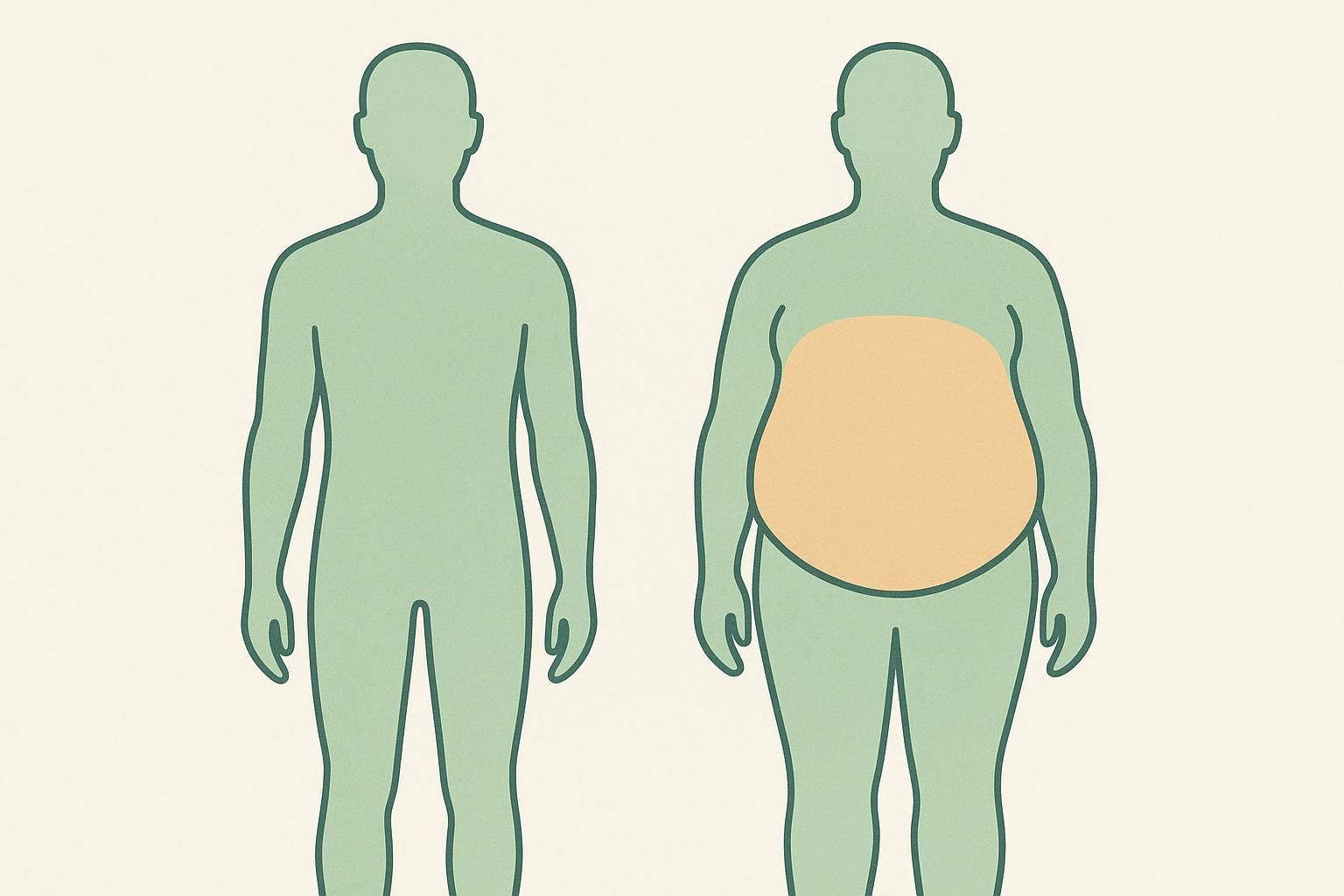
Large U.S. data show BMI ≥ 30 has good specificity but poor sensitivity for detecting excess body fat—meaning many people with high body fat are missed by BMI in the “overweight” range (NHANES study on BMI accuracy). For more context on BMI’s blind spots, check our guide comparing BMI and body fat percentage.
How to measure body composition (and visceral fat)
If you’re choosing between technologies, the big trade-offs are accuracy, convenience, and whether they can estimate visceral fat and bone.
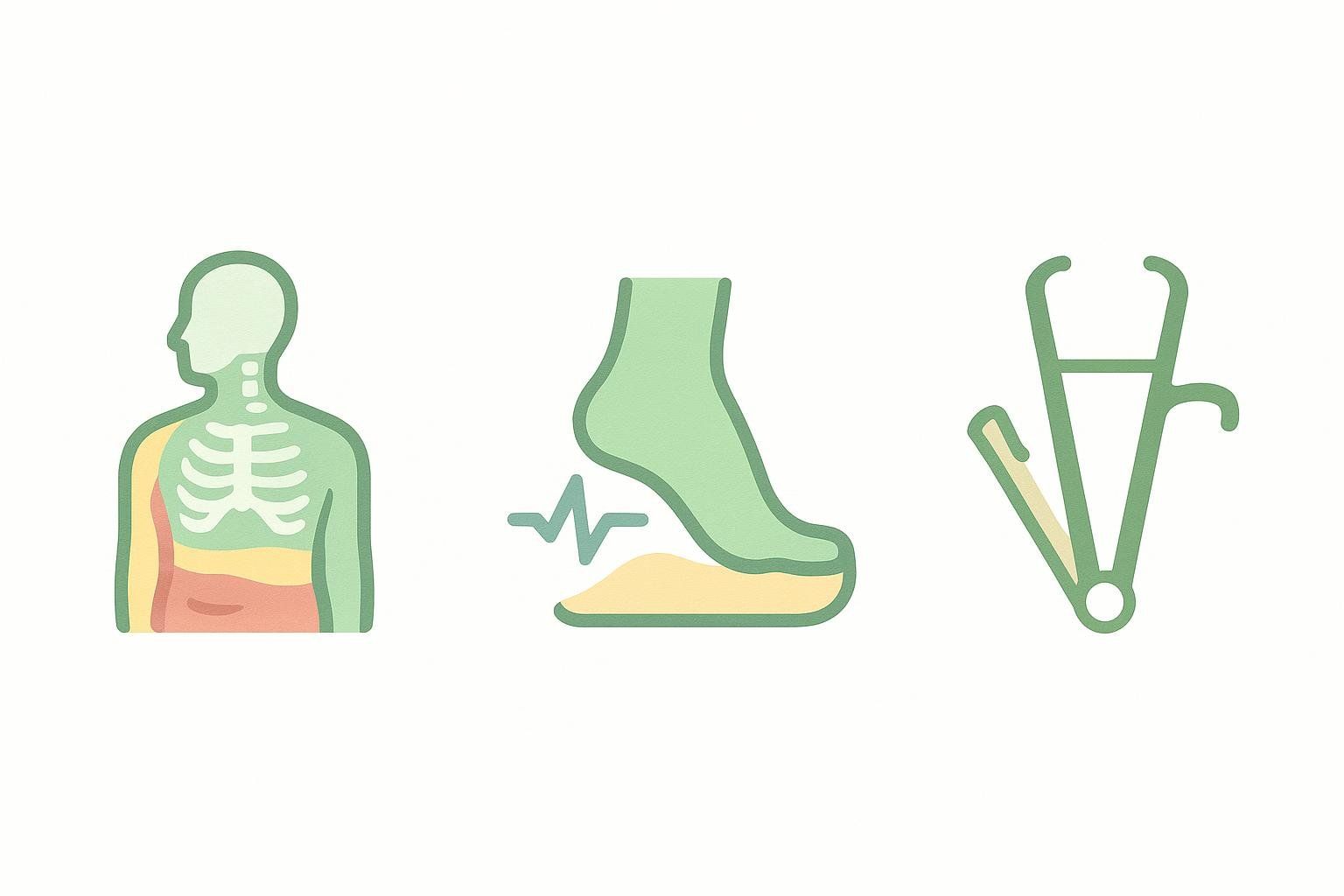
| Method | What it measures | Pros | Cons | Best use |
|---|---|---|---|---|
| DEXA scan | Fat, lean, bone; estimates visceral adipose tissue (VAT) | High accuracy, regional detail, VAT estimate, low radiation | Appointment needed | A clinical reference standard for precise tracking and risk insight |
| BIA (smart scales, InBody) | Estimates body fat via conductivity | Fast, accessible | Hydration-sensitive; individual error can be large | At-home or frequent trend monitoring |
| Skinfold calipers | Subcutaneous fat | Low cost | Skill-dependent; misses visceral fat | Field estimates if technician is skilled |
| Bod Pod / Hydrostatic | Density-based % body fat estimate | Research-backed | Specialized equipment required; no VAT/bone detail | Periodic assessments without regional/VAT data |
Research on measurement accuracy
- BIA can substantially underestimate body fat versus DEXA and varies widely for individuals (professional footballers: DEXA vs BIA vs skinfolds; large clinical cohort comparing BIA to DEXA).
- Modern DEXA shows low radiation and high agreement with CT/MRI for composition, and its VAT estimates correlate with cardiometabolic risk (clinical review of DEXA body composition).
Example: How the Scale Can Hide Progress
- Start: 180 lbs (54 lbs fat, 126 lbs lean)
- After 10 weeks: 178 lbs (48.1 lbs fat, 129.9 lbs lean)
Scale change: −2 lb
Actual change: −5.9 lb fat and +3.9 lb lean
Bottom line: this reflects meaningful fat loss alongside lean-mass gain. A DEXA scan makes these changes visible.
Your simple game plan: track what matters
- Get a baseline composition scan
- DEXA gives you fat %, lean mass, bone metrics, and a visceral fat estimate in minutes (DEXA’s role in chronic disease management).
- Prepping is easy—follow this checklist: our scan preparation guide.
- Re-test every 8–12 weeks
- That cadence is frequent enough to guide training and nutrition, without chasing day-to-day noise.
- Between scans, keep a consistent routine for any BIA/smart-scale checks (same time of day, hydration, and pre-measure routine).
- Train and eat for recomposition
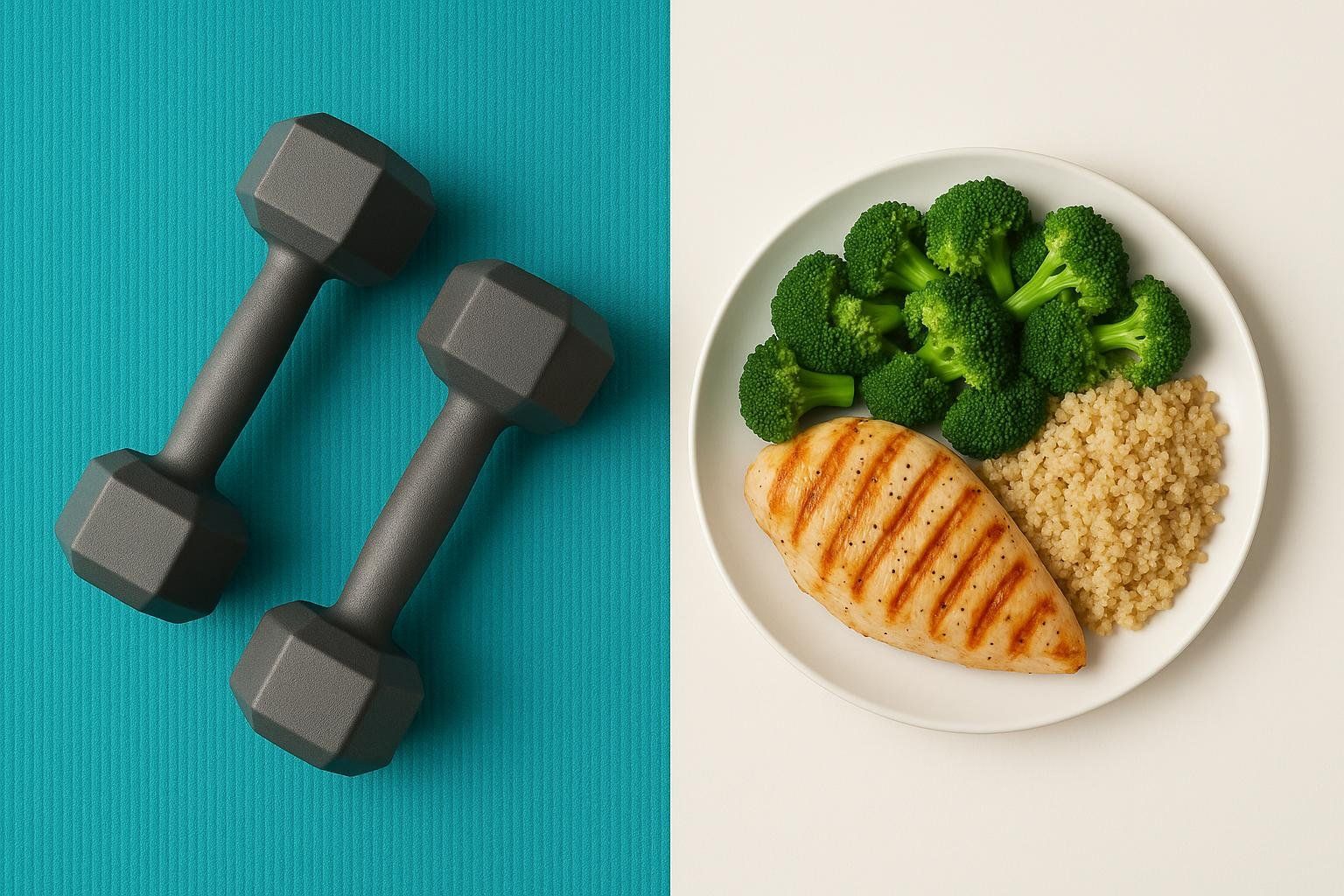
- Prioritize protein, progressive strength training, and a sustainable calorie balance to lose fat while maintaining or adding lean mass—a process detailed in our guide to improving body composition.
- Watch your visceral fat trend
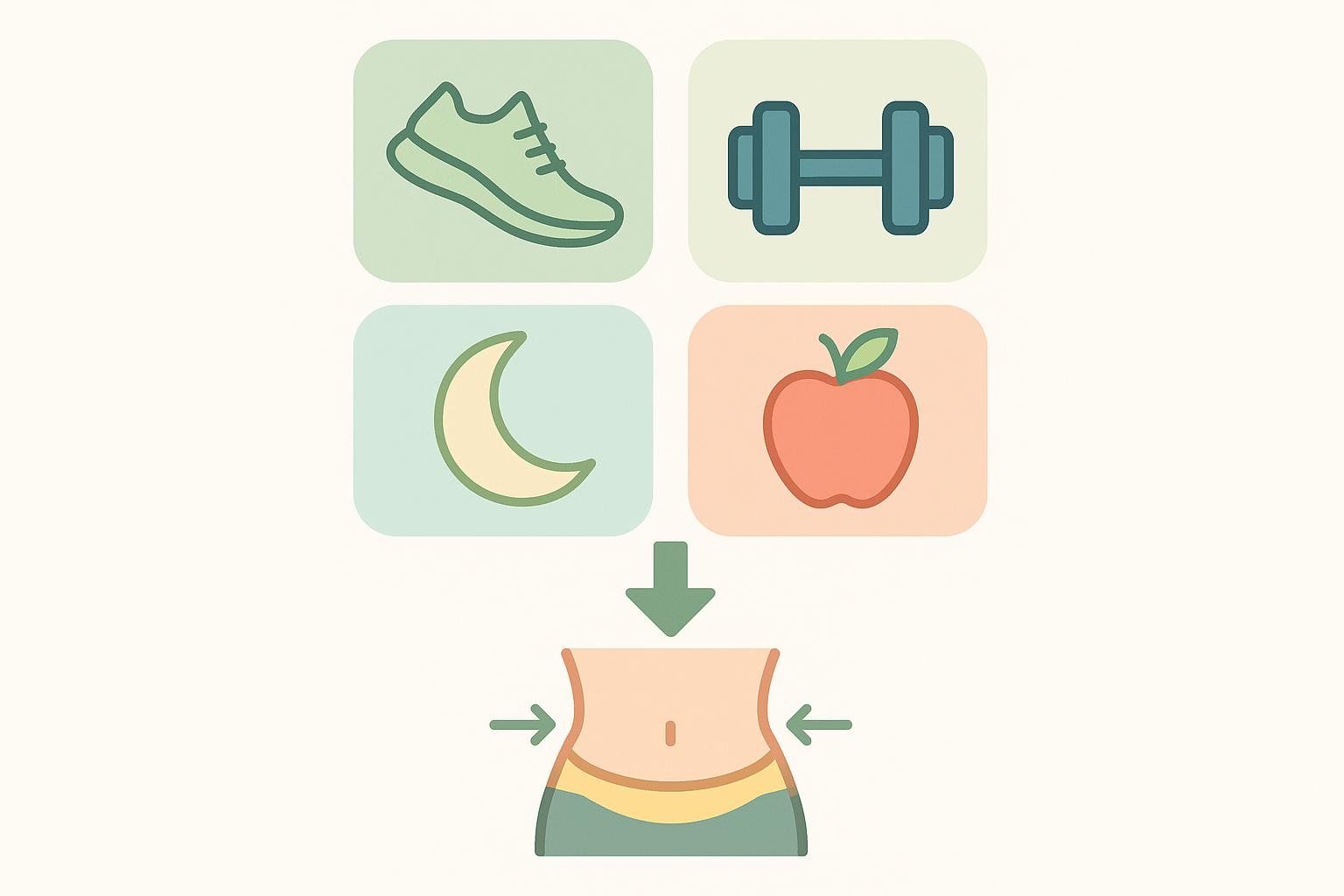
- Visceral fat is the stealth risk factor you can lower with lifestyle changes; track it with DEXA and learn thresholds in our explainer on visceral fat. A mix of aerobic work, strength training, quality sleep, and balanced nutrition supports healthier levels (UCLA Health on muscle and visceral fat).
- Use tools that reinforce habits
- Track waist circumference and progress photos monthly.
- For a quick estimate, try a body-fat percentage calculator.
The bottom line
Chasing a lower number on the scale can hide the improvements that matter—more muscle, less visceral fat, and better long-term health. If you want a clearer picture, start tracking your body composition and trends, not just your weight. You can learn how to find a DEXA scan, interpret your results confidently, and review BodySpec’s DEXA accuracy standards to get reliable, repeatable data.

